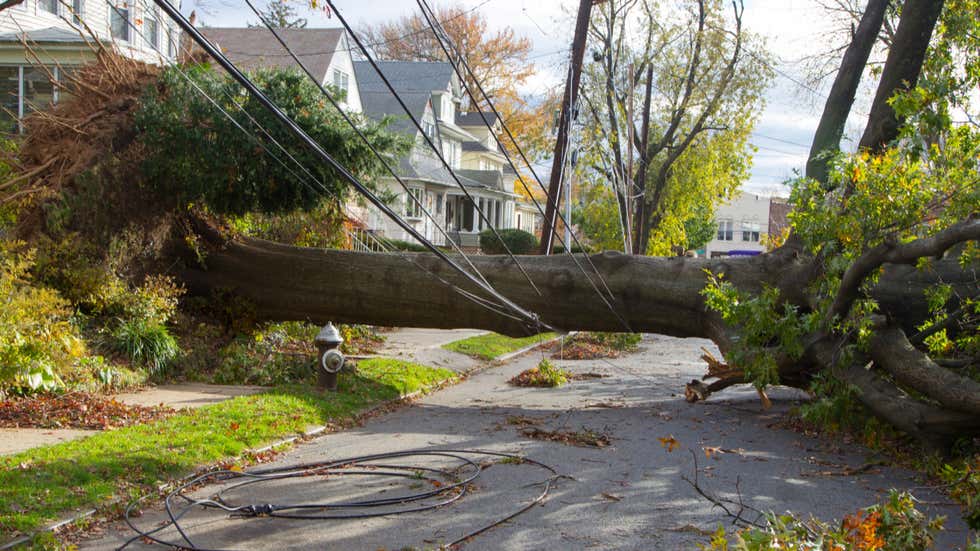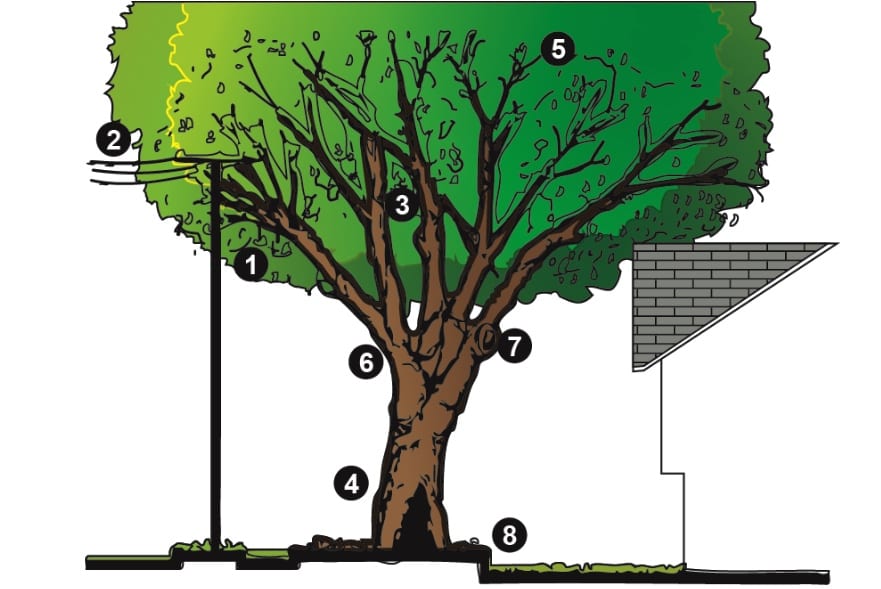
Identifying Tree Risk
Learn to Identify Common Tree defects
Trees are a beautiful part of our properties and communities but when they fall and cause property damage or even death they can become very scary. Understanding and dealing with the risks that come with trees will make your property safer and give you peace of mind during the next windstorm.
Trees provide benefits
Trees are a vital part of our ecosystem. Anyone who doesn’t understand this should read The Lorax by Dr. Suess. The benefits that trees provide to our communities are immense. Some of these benefits include aesthetic value, seasonal fruit, and habitat creation for local wildlife. The utility benefits include a cooling effect of the canopy in summer, sound and visual abatement from traffic, privacy created by a visual barrier, as well as helping to dry out saturated soil and reduce stormwater runoff that could increase erosion.
Many families seek out neighborhoods with mature trees in the front yard. A 2002 study authored by Marius Thériault, Yan Kestens, and François Des Rosiers, entitled “The Impact of Mature Trees on House Values and on Residental Location Choices” has shown that 84% of families in middle to high-income neighborhoods would prefer homes with mature trees and are willing to pay up to 15% more to live in these neighborhoods. So the trees in your front yard are a large contributing factor to property values.
Trees can be Dangerous
Trees, in whole or in part, can fall and cause injury and even death. It is very important to assess a tree for risk. Suspending hundreds or thousands of pounds high above the ground is hard work and yet trees do it every day for hundreds of years with only a relatively few trees failing. Yet, despite these odds, there is no such thing as a completely “safe” tree. Every tree has the potential for failure.
It is a property owners responsibility to assess the risk that each tree poses. I would like to provide some guidance for identifying common defects that are most often associated with trees falling. In order to evaluate the seriousness of these defects, it is best to call out a Certified Arborist. Regular monitoring of your trees will help you to identify trees with an increased level of risk. Once these trees are found, steps can be taken to reduce the likelihood of major damage, injury or death.
Trees and Power Lines
Trees that fall into power lines can have serious consequences. The levels of electricity that run through power lines can cause fires, outages, and surges that have the potential to affect the entire community. And when power lines fall that are still carrying electricity, it is especially dangerous. A tree with the potential to fall into power lines is a very serious situation and should be evaluated by a Utility Specialist
Tree Risk Considerations

- Does the tree have dead branches?
- Are there hanging, detached, branches in the canopy?
- Does the tree have rotten wood or cavities along the trunk?
- Are there any mushrooms near the base of the tree?
- Does the tree have splits or cracks in the trunk?
- Have any branches fallen from the tree?
- Have nearby trees fallen or been removed lately?
- Does the trunk have a strong lean? Is it recent?
- Do many branches originate from a single point in the trunk?
- Has any digging or excavation taken place near the tree?
- Has the grade been changed recently?
- Have the leaves gone through a premature change?
- What past pruning work has been done on this tree?
Defects in Urban Trees

- Regrowth from previous pruning cuts or topping
- Power lines adjacent to the tree
- Broken or Hanging limbs
- Cavities and Decay in the trunk
- Dead and Diseased limbs
- Too many branches starting from a single point
- Decay and Rot from old wounds
- Recent change in grade or other excavation
Managing Tree Risk
An ISA Certified Arborist can help you to manage the trees on your property and provide plant health care treatments that can help reduce the risks associated with poor tree health. Once called, a Certified Arborist may suggest one or more of the following to help reduce the risk of a particular tree:
- Remove the Target. While a home or nearby power line cannot be moved, it is possible to move other objects that could be struck or damaged in the event that the tree were to fall.
- Prune the tree. Remove a defective branch or help to balance the canopy of a lopsided tree.
- Cable and brace the tree. Provide supplementary support to a tree by means of cables or braces to prevent a tree from over extending itself in the case of winds.
- Provide routine care. Mature trees need regular care in the form of water, nutrients, mulch, and pruning.
- Remove the tree. Some trees that develop an unacceptable level of risk may be best to remove. It is always a good idea to plan for future removal of old and sensitive trees by planting replacement trees decades in advance.
Recognizing and Reducing the risk associated with owning trees can preserve the lives of your neighbors and your loved ones. You can also increase a trees longevity and preserve the many benefits of trees for years to come.
Ensuring Quality Care for your Trees
Trees are assets to your property and vital for life. In order to properly care for trees, it requires the skill and experience of a qualified, certified arborist. If you answered “yes” to any of the questions in the Tree Risk Considerations then please have a local arborist come out and perform a tree risk assessment by clicking the link below.
